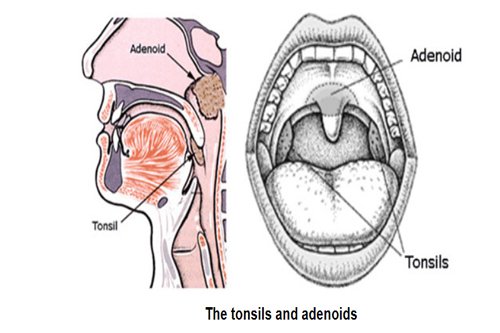Brain and ENT Clinic – Dr Lalit Mahajan In Nagpur & Dr Rachna Gangwani Mahajan In Nagpur
Adenoid removal

Adenoid removal, also known as adenoidectomy, is a surgical procedure in which the adenoids are removed. Adenoids are small masses of tissue located at the back of the nasal cavity, near the opening of the Eustachian tubes. They are part of the immune system and play a role in helping the body fight infections, particularly in children.
Adenoidectomy is a common and generally safe procedure. The decision to proceed with adenoid removal is made based on the individual’s specific symptoms, medical history, and the severity of the adenoid-related issues. It is typically recommended after other conservative measures have been tried and proven ineffective.
Symptoms of Adenoid Removal
Recurrent or Chronic Ear Infections:
- Enlarged adenoids can contribute to frequent ear infections.
Chronic Nasal Congestion:
- Difficulty breathing through the nose due to swollen adenoids.
Sleep Disordered Breathing:
- Conditions such as sleep apnea or snoring may be related to enlarged adenoids, especially in children.
Chronic Sinusitis:
- Enlarged adenoids may contribute to chronic sinus infections.
Breathing Problems:
- Persistent mouth breathing due to nasal obstruction.
Speech or Swallowing Issues:
- Enlarged adenoids can affect speech and lead to swallowing difficulties.
Recurrent Throat Infections:
- Frequent or chronic infections of the throat.
Procedure
Preparation:
- Before the surgery, the individual may undergo a preoperative evaluation, which may include a physical examination, blood tests, and sometimes imaging studies.
Anesthesia:
- Adenoidectomy is typically performed under general anesthesia, especially in children. Local anesthesia with sedation may be an option for adults.
Surgery:
- The surgeon uses a small, curved instrument or suction to remove the adenoids through the mouth. No external incisions are made.
Recovery:
- After the procedure, the individual is monitored in a recovery area until they wake up from anesthesia. Most people can go home on the same day.
Postoperative Care:
- Instructions for postoperative care may include avoiding certain activities, taking prescribed medications, and following a soft diet for a brief period.
Benefits
Improved Breathing:
- Removal of enlarged adenoids can improve nasal breathing and alleviate symptoms of nasal obstruction.
Reduced Infections:
- Adenoidectomy can reduce the frequency of ear and sinus infections associated with adenoid enlargement.
Improved Sleep:
- In cases of sleep-disordered breathing, such as snoring or sleep apnea, adenoid removal can contribute to better sleep quality.
